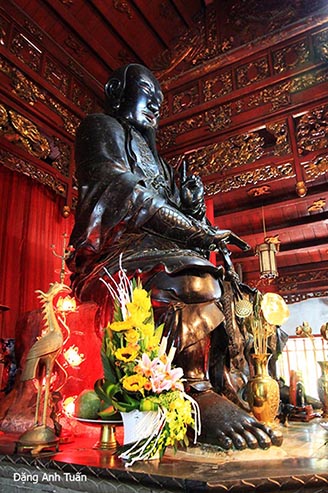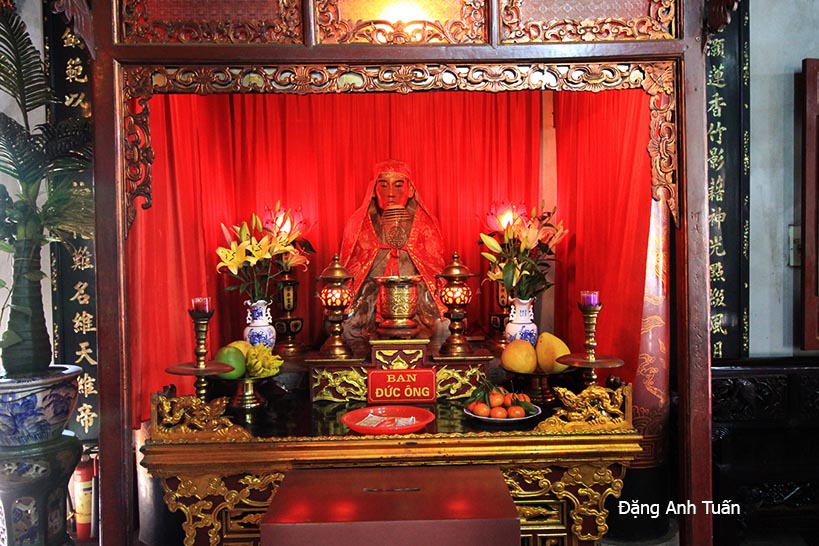Not far from Lake of the West (Hồ Tây), Quán Thánh is one of the inescapable sites of Hànôi city. This sacred temple is reserved to the cult of Taoist God named Huyền Thiên Trấn Vũ considered in Asia as the emperor of the North (Bei Di (or Bắc Đẩu in vietnamese)) ruling on the underwater world. According to the judicious arrangement of Feng Shui, (Phong Thủy), it is erected with three others for purpose of protecting Thăng Long capital against strangers and evil spirits, each going in the well-defined direction (Bạch Mã temple Hàng Buồm at the East, Voi Phục (Thủ Lệ ) temple at the West, Kim Liên in the South and Quán Thánh in the northern Hanoi). It is often said that this temple was erected in 1010 under the reign of Lý Thái Tổ king. The statue was made of wood at the beginning of its installation. Despite successive renovations under the Trần dynasty, it was only in 1677 under the reign of Lê Hy Tông king that the restoration was significant with the installation and replacement of the statue in bronze-black and the bell tower of the temple.
Vũ Công Chấn’s altar
This colossal statue of 4 tons and about 4 meters in height, was placed on a marble platform having one metre in height. In a sitting position with a square face and barefoot, the statue has a taoist traditional dress. It holds in the right hand, a sword pointing on the turtle’s back and superbly decorated by the presence of the coiled snake while in the left hand, a Taoist mudra, a codified ritual sign is visible by way of exorcism. Being associated to the direction of the North and water, the color must be black according to the theory of five elements (Ngũ hành). It is the explanation found in the color selection for the statue.
Pictures gallery
Đền Quán Thánh
The fine detail and the imposing size of this statue made almost four centuries ago, unquestionably reveal the prodigious exploit and know-how of Ngũ Xã village steelworkers of this time under the supervision of Vũ Công Chấn.
This temple is not only the one of last Taoist temples found in the capital but also the ideal place for those who like serenity and calm in the town so loud and vibrant as Hànội city.


